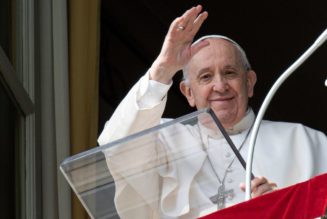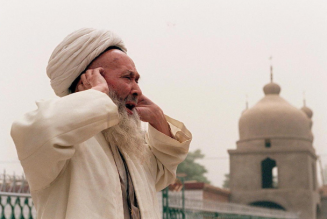ROME – Leaders probably ought to be judged not only by the problems they solve, but also the problems they avoid in the first place. The latter are sometimes harder to see, because by definition we’re talking about something that didn’t happen, but that doesn’t make the impact any less real.
One participant in the ongoing Synod of Bishops on Synodality has suggested Pope Francis may be in line for just that second kind of credit right now, citing an interesting historical parallel from the Second Vatican Council.
Famously, the current synod, in a sense, got underway 48 hours before its formal opening with a set of dubia, or doubts, submitted to the pontiff by five conservative cardinals. In responses to those dubia released by the Vatican, Francis, among other things, offered a cautious “yes” to the blessing of same-sex unions on a case-by-case basis, and a basic “no” to women’s ordination while allowing for the possibility of further study.
Both had been expected to be neuralgic questions in the synod, so by addressing them before it even began, Francis took some of the drama out of the gathering and, in addition, focused whatever resentment those positions may generate on himself.
Critics might argue that the pope preempted the synodal debate, substituting his own personal authority for the collective wisdom of the group, and raising the question of whether the previous three years of preparation and consultation were actually a waste of time, at least as far as these two matters are concerned.
Yet a precedent cited Tuesday by Bishop Anthony Randazzo of Broken Bay, Australia, suggests another reading of the pope’s intervention.
Randazzo, a canonist by training and a former official of the Vatican’s Congregation for the Doctrine of the Faith, pointed out that during the final session of the Second Vatican Council in 1965, Pope Paul VI intervened to shut down discussion of priestly celibacy, reserving the question to himself. That effectively ended what had threatened to become a divisive row inside the council, clearing the way for overwhelming approval of the council’s document on the priesthood, Presbyterorum Ordinis, a month later.
The papal move came after Bishop Pedro Paulo Koop of Lins in Brazil had submitted a text in favor of married priests that had been endorsed by 43 fellow bishops taking part in Vatican II, which seemed to set the stage for a high-profile clash. In that context, Paul VI sent a letter to French Cardinal Eugène Tisserant, dean of the College of Cardinals and president of the council overseeing Vatican II, which was read aloud to all the gathered bishops.
“It is not at all appropriate to have a public debate on this topic, which requires such utmost prudence and is of such great importance,” the pope wrote.
“It’s our purpose not only to preserve with all our strength this ancient sacred and providential law, but also to strengthen its observance by calling priests of the Latin Church to awareness of the causes and reasons which today … mean that the same law, thanks to which all priests can consecrate the entirety of their love only for Christ and to dedicate themselves totally and generously at the service of the Church and of souls, should be considered as highly suitable,” the pope’s letter read.
Two years later, Paul VI issued the encyclical Sacerdotalis caelibatus reaffirming celibacy for priests of the Latin Church, which, as Randazzo said Tuesday, remains “an ongoing reference point for formation and discussion to this day.”
To be sure, the pope’s teaching didn’t end the broader debate over celibacy. In 1971 a National Pastoral Council in Holland would vote in favor of making priestly celibacy optional, and ever since the question has come up repeatedly in various venues, including the 2019 Synod of Bishops on the Amazon, when participants voted by a large majority in favor of relaxing the celibacy rule for isolated rural communities.
Yet even if Paul VI didn’t succeed in resolving the substantive issue, he did at least prevent Vatican II from being sidetracked by a single contentious question in its final stages. Some historians of the council believe Presbyterorum Ordinis became a more thoughtful, and comprehensive, treatment of the priesthood, precisely because its final consideration wasn’t utterly swamped by debate over the single issue of celibacy.
In other words, Paul VI took a hit in order to prevent his council from getting bogged down – and, in addition, also had the integrity of saying out loud that debate was pointless anyway, since he’d already made up his mind. One could argue that Francis has done pretty much the same thing with his synod.
Francis’s response to the dubia, therefore, arguably is more or less his equivalent of Paul VI’s letter to Tisserant. Whether that response also sets the stage for a future encyclical, as Paul’s letter did, remains to be seen.
As a footnote, Randazzo suggested this historical parallel in response to a question from Crux’s senior correspondent, Elise Ann Allen, who also happens to be my wife. Thus, it’s obviously with no bias, and no craven attempt to curry favor whatsoever, when I say it was a brilliant and probing question from a supremely talented reporter, and I’m standing by that assessment come hell or high water.





